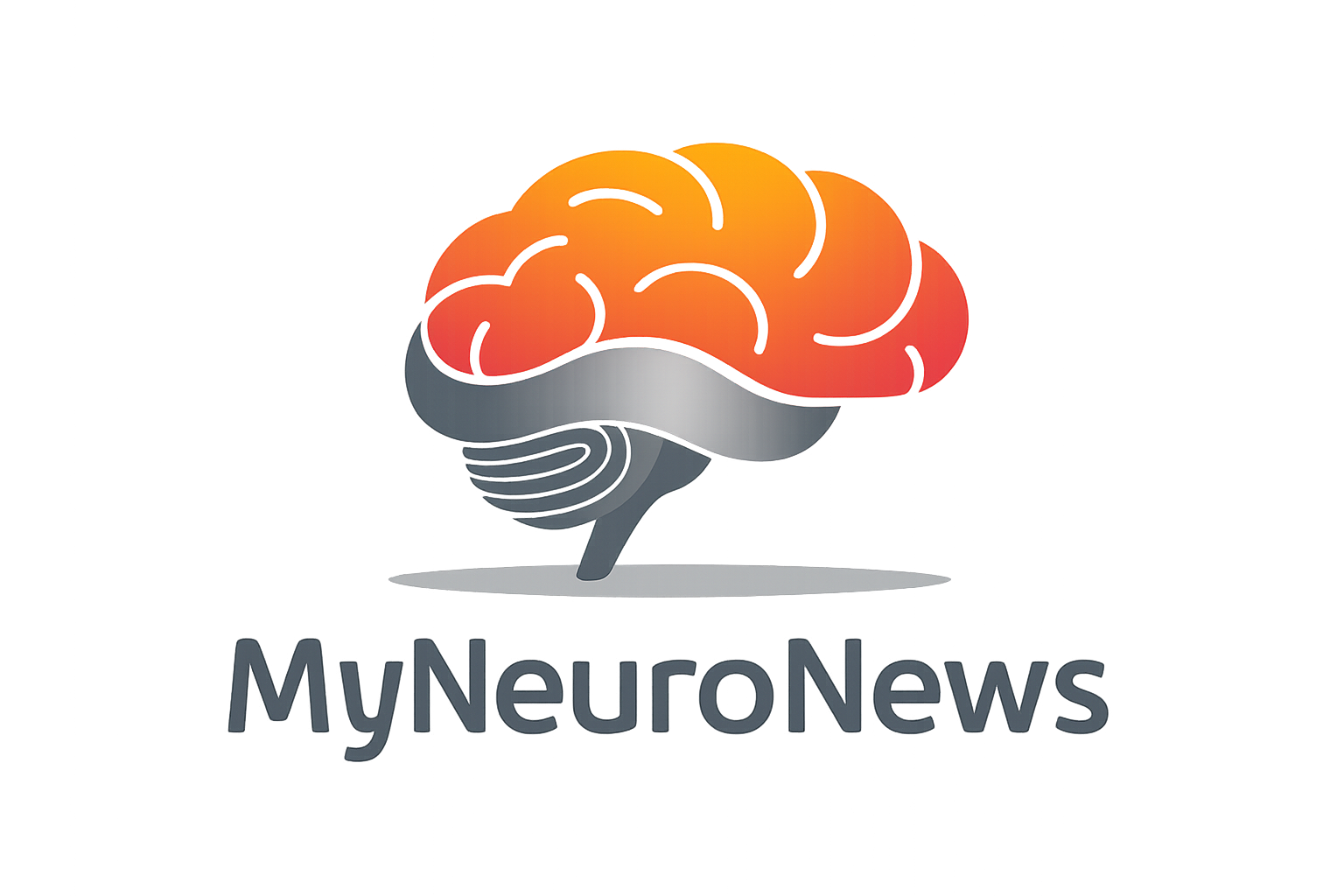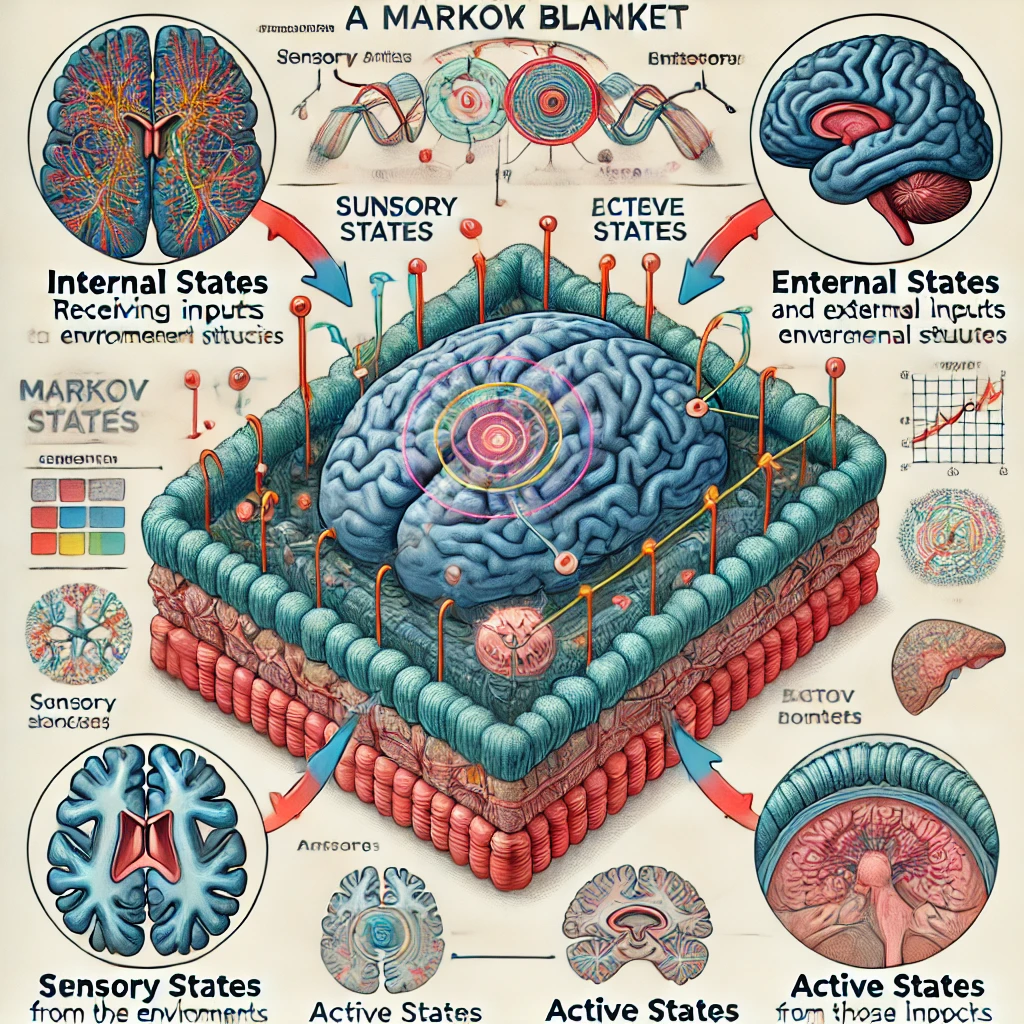The brain is an incredibly complex system, constantly interacting with both internal processes and external stimuli. To make sense of how the brain maintains its stability and functionality in such a dynamic environment, scientists have turned to a concept called Markov blankets. Originally developed in the context of statistical inference, Markov blankets have found profound relevance in neuroscience, providing a framework for understanding how the brain maintains a clear boundary between its internal states and the external world.
What are Markov Blankets?
In simple terms, a Markov blanket separates the internal workings of a system (such as the brain’s neural processes) from external stimuli, ensuring that the two interact efficiently without becoming chaotic or disordered. In the brain, this means sensory states (how the brain processes inputs from the environment) and active states (how the brain responds to those inputs) act as intermediaries between internal cognitive functions and the external world.
Imagine the brain as a predictive machine, constantly generating expectations about the world and updating those expectations based on new sensory information. The Markov blanket allows the brain to make these predictions and respond appropriately by controlling the flow of information between its internal models and the environment. This process of predictive coding is central to brain function—minimizing surprise and ensuring that the brain efficiently adapts to the ever-changing environment.
How Brain Injury Disrupts Markov Blankets
When the brain experiences trauma, such as mild traumatic brain injury (mTBI), the intricate balance maintained by Markov blankets can be severely disrupted. After an injury, the brain undergoes a cascade of neurometabolic and cellular changes, which can impair its ability to process sensory information and produce appropriate responses. This disruption is akin to damaging the filter that allows the brain to interact with the outside world smoothly.
Several key factors contribute to this disruption:
- Ionic Imbalances and Neurotransmitter Release: Following a brain injury, there is an immediate disruption of cellular processes due to ionic imbalances. Neurotransmitters like glutamate are released in excess, which can cause neurons to become hyperexcitable. This disrupts the brain’s ability to accurately process sensory inputs, leading to cognitive impairments.
- Mitochondrial Dysfunction and Energy Crises: The brain’s ability to meet energy demands is compromised after injury, which affects the processes that rely on consistent energy supply, such as memory formation and executive function. Without proper energy management, the Markov blanket’s ability to mediate between internal and external states becomes less reliable.
- Blood Flow Changes and Axonal Damage: Brain injury often leads to changes in blood flow, which in turn reduces the brain’s capacity to support neural communication. Axonal damage, which disrupts the pathways through which neurons communicate, further weakens the structural integrity necessary to maintain the flow of information. This makes it difficult for the brain to generate accurate predictions about the environment.
Cognitive Decline and Markov Blankets
When the Markov blanket is disrupted, the brain’s predictive coding mechanisms break down. The sensory states, which should help the brain adjust to new information, become overloaded with noise, leading to impaired processing. This manifests as cognitive impairments, such as difficulty with memory, attention, and executive functions.
One of the most important effects of a disrupted Markov blanket is that it leads to increased cognitive load. The brain struggles to predict the outcomes of actions or interpret sensory inputs, which leads to higher levels of uncertainty and confusion. This can cause mental fatigue, slower reaction times, and problems with concentration, all of which are common in individuals recovering from brain injuries.
Simulating Markov Blanket Disruptions
To better understand how these disruptions affect brain function, researchers have used simulations to mimic the effects of brain injury on Markov blankets. These simulations introduce “noise” into the system, representing the real-world disruptions caused by injury, such as neurotransmitter imbalances and reduced neural connectivity.
The results of these simulations highlight several key findings:
- Sensory processing becomes delayed: Injured brains take longer to process external stimuli, leading to slow reaction times and impaired attention.
- Motor function suffers: Because active states, which govern the brain’s responses to stimuli, are disrupted, motor functions (such as coordination and reaction times) also become impaired.
- Cognitive instability increases: The brain’s internal states become more chaotic, making it harder for individuals to focus, remember information, and make decisions.
The Importance of Understanding Markov Blankets
Understanding how Markov blankets operate, and how their disruption leads to cognitive decline, is crucial for several reasons. First, it helps clarify why individuals with traumatic brain injuries experience such a wide range of symptoms, from cognitive deficits to emotional challenges. These symptoms are not isolated; rather, they stem from a breakdown in the fundamental mechanisms that allow the brain to function smoothly.
Moreover, this understanding could pave the way for new diagnostic tools and treatments. By identifying specific ways in which Markov blankets are disrupted after an injury, clinicians could develop more targeted therapies that restore the brain’s predictive coding capabilities. Rehabilitation could focus on re-establishing efficient communication between internal and external states, potentially improving recovery outcomes for individuals with brain injuries.
In essence, Markov blankets offer a unique window into the brain’s functioning, both in health and in injury. They help us understand how the brain remains resilient in the face of constant sensory input and how that resilience can be compromised following trauma. By deepening our knowledge of Markov blankets, we move closer to developing more effective treatments for brain injuries and better support for individuals coping with the long-term cognitive consequences.

